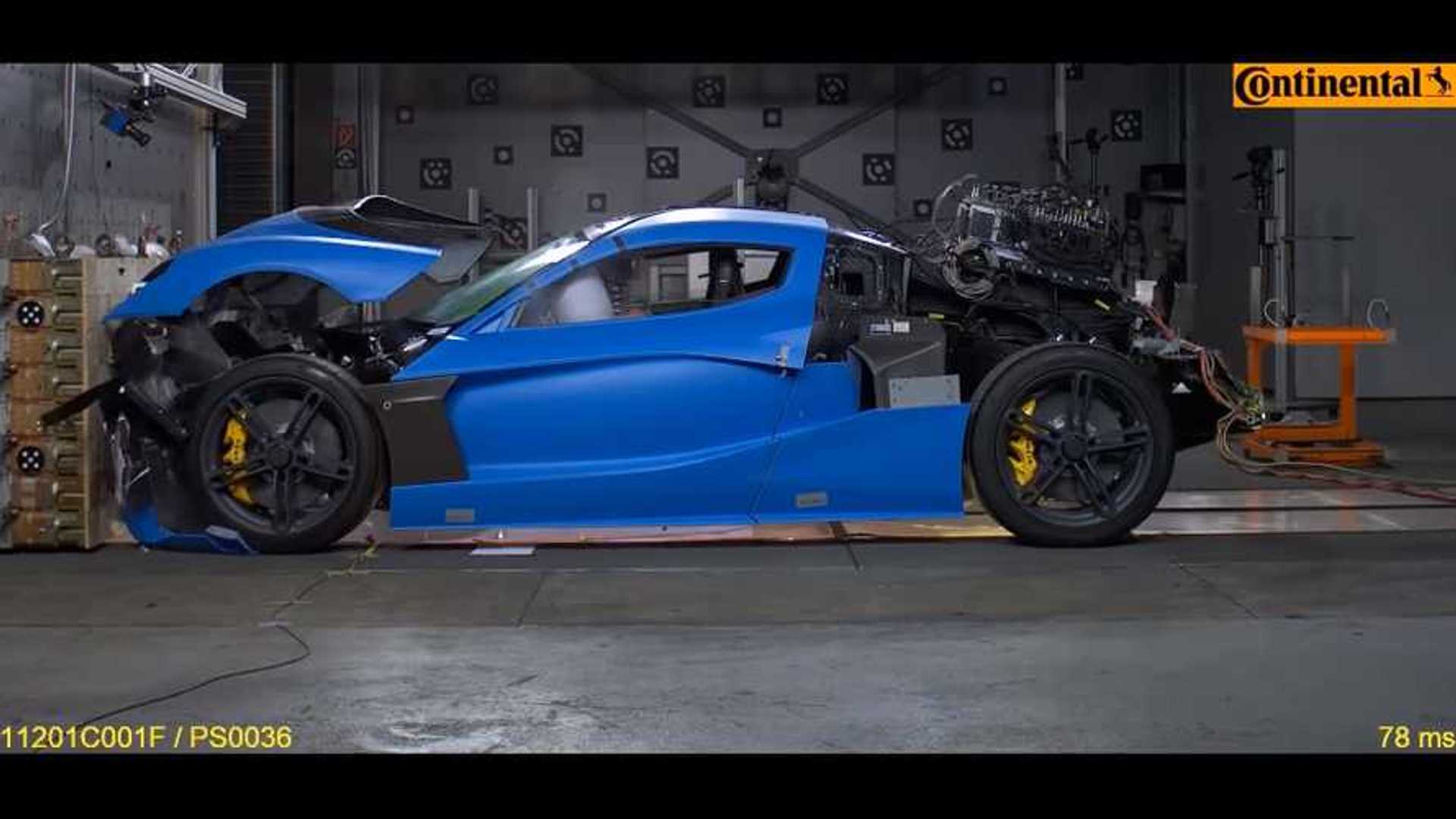Don’t be frightened by what you’re about to see.
Rimac opens the above video with a warning that “some car fans may find this content disturbing. Viewer discretion advised.” That’s the common tongue-in-cheek intro to any clip or photo set showing desirable cars – and particularly supercars – getting beat up. We’re going against the grain this time by welcoming Motor1.com readers to watch this clip and peruse our gallery of screenshots, because it’s absolutely fascinating to see how a very small car company goes about the very expensive process of crash-testing a new vehicle.
In this case, the machine in question is Rimac’s forthcoming EV hypercar, the C_Two. It debuted way back in March 2018 at the Geneva Motor Show, but that was a preproduction model. Since then, the niche automaker has been studiously developing the production version and crash testing is a significant part of the process. It’s one thing to design a 1,888-horsepower (1,408-kilowatt) electric hypercar, but making sure it can protect occupants is a tremendous challenge that ultimately can only be overcome by crashing real cars in real life. That’s a problem when prototypes cost a million bucks.
As such, Rimac spends a lot of time performing advanced simulations to see how various components and designs should respond to different impact scenarios. Once those designs are dialed in on computer, real-world testing begins first at the component level, examining individual structures and how they respond to impacts. From there it expands to systems, and finally to full vehicle crash-testing. Even at that phase there are different levels, starting with experimental prototypes, prototypes, and finally to preproduction vehicles.
Gallery: Rimac C_Two Crash Test Screenshots








That’s indeed a terrific expense for any automaker to undertake, never mind one like Rimac that only has 10 production vehicles total to its name thus far. In addition to in-depth simulations, Rimac reused the same monocoque chassis five times for various tests. Similar to Koenigsegg’s testing process, Rimac found the monocoque was strong enough to handle multiple tests.
The video is filled with awesome behind-the-scenes glimpses of C_Two development, which incidentally is now proceeding into the final testing phase. Rimac says the hypercar passed the first series of tests with flying colors, which hopefully means its still on track for a production launch sometime next year.
- Share on Facebook
- Share on Twitter
- Share on LinkedIn
- Share on Flipboard
- Share on Reddit
- Share on WhatsApp
- Send to email
The Rimac C_Two is undergoing a massive program of crash-testing alongside hundreds of other official assessments as a part of its global homologation process.
In addition to the homologation, we are performing thousands of tests to ensure the performance, durability, and reliability of all systems. This intensive program ensures that our hypercar is safe and road-legal worldwide, enabling us to deliver cars to our customers in every major global market. We decided to bring you along on our journey, showing you everything – even the tough-to-watch crash tests.
Global homologation of the Rimac C_Two is one of our main objectives. We want our hypercars to be safe and road-legal worldwide.
The fully-fledged homologation process, without any shortcuts, is a huge task for a small-volume manufacturer as it mirrors the processes undertaken by much bigger brands. The process from the first concepts, to full prototypes, to cars on the road, is a three to four-year process.
We begin by running simulations and developing the car in the virtual world. Next, we conduct material and component tests. After we are happy with the results, we start the vehicle testing program – starting with experimental prototypes, then testing validation prototypes, pre-production prototypes, and the final car – it’s a nerve-wracking process for the entire team. To be sure that the car functioning is as intended, physical tests need to be in perfect correlation with the simulations.
Now that the first round of crash tests is successfully completed, we can proceed to the next stage of development with full confidence. The next step in the development of the C_Two is to further improve our design together with perfecting the correlations of our virtual simulations.
We’re always striving to exceed the targets as we work toward our fully-homologated global production vehicle.
Source: Read Full Article
